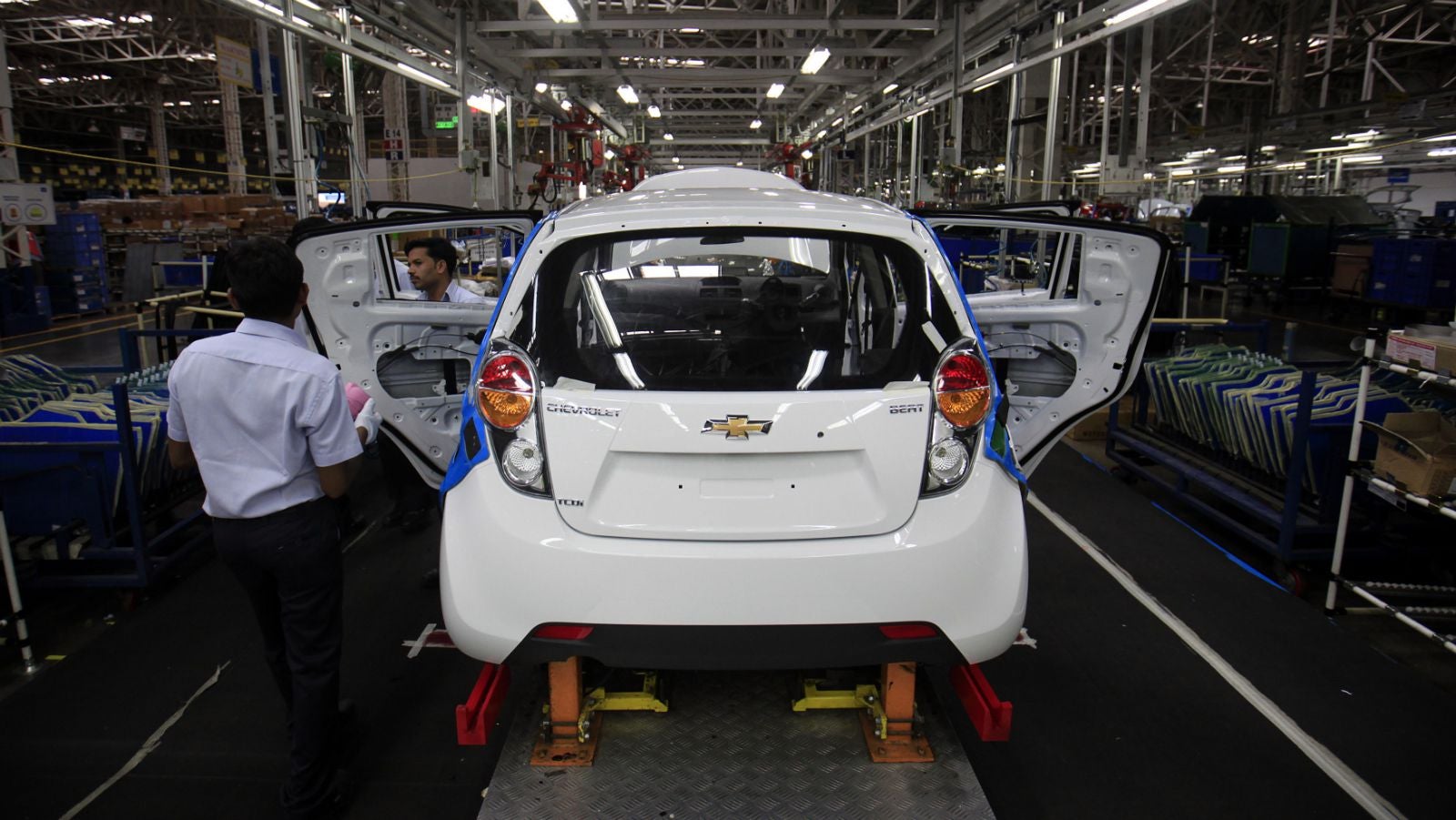General Motors’ big plans for India may be just too ambitious
After almost two decades of trying and failing, the Indian arm of General Motors (GM)—the world’s third largest automobile company by sales—has another plan to grab a bigger piece of India’s booming car market.


After almost two decades of trying and failing, the Indian arm of General Motors (GM)—the world’s third largest automobile company by sales—has another plan to grab a bigger piece of India’s booming car market.
But the Detroit-headquartered firm has now set such a massive target for its Indian subsidiary for the next ten years that it almost seems a tad too ambitious.
By 2025, GM is looking to sell as many as 400,000 units annually in India and capture 5% of the domestic market, Reuters reported on May 4. The carmaker also wants to make India a key global production and export hub.
“We’re pretty optimistic,” Stefan Jacoby, executive vice president of international operations, said in an interview to Reuters. “We see growth potential in India, and believe there’s a good opportunity for the Chevrolet brand to take share in this market. There’s more prosperity and buying power.”
But those numbers are far removed from GM’s track record in India: In 19 years of operating in the country, it has only managed to capture less than 1.8% of the market share in the one of the world’s biggest automobile market.
Analysts estimate that the company sells little less than 57,000 vehicles per annum. That’s a little more than what Maruti Suzuki, India’s biggest carmaker, sells every month.
“They have to be realistic,” Deepesh Rathore, director at Gurgaon-based Emerging Markets Automotive Advisors, told Quartz. “For the past two years they have been consistently losing sales and seeing a decline of 25-30% every month. On an average they sell about 4,500 units per month, while Ford sells about 10,000 units.”
As things stand, India’s automobile industry is dominated by Maruti Suzuki, which controls 50% of the market, followed by South Korea’s Hyundai and Japan’s Honda—both of which entered India around the same time as GM. Together these three companies account for about 75% of the Indian market.
“If you do not have consistency, you just cannot make it work in India,” Abdul Majeed, partner at PwC, told Quartz. “Every company needs to reinvent itself for the market and continuously launch products. You also need a very good distribution network. That has not been the case with GM.”
Among GM’s biggest sales drivers in India has been the Chevrolet Beat, a hatchback, which when launched in late 2010 was clocking in sales of more than 5,000 units per month. That number has now fallen to about 1,000, according to industry experts and analysts. Another sedan, Chevrolet Sail, is also selling less than 1,000 units a month.
Despite setting the targets for 2025, GM is only lining up two new products in its product pipeline by 2017. Of these, one is a sports utility vehicle (SUV), while the other is a multi-utility vehicle. Both these segments are not traditional volume drivers in India—which is dominated by smaller hatchbacks and compact SUVs.
“They do not seem to have any product that will drive volumes until 2017,” Rathore said. GM did not respond to an emailed questionnaire from Quartz.
“They are yet to develop a product that is capable of attracting the wider audience. GM also needs to work on improving the reputation of its dealers,” an analyst with a domestic brokerage told Quartz, requesting anonymity. ”I am not even sure about GM’s vision for India.”